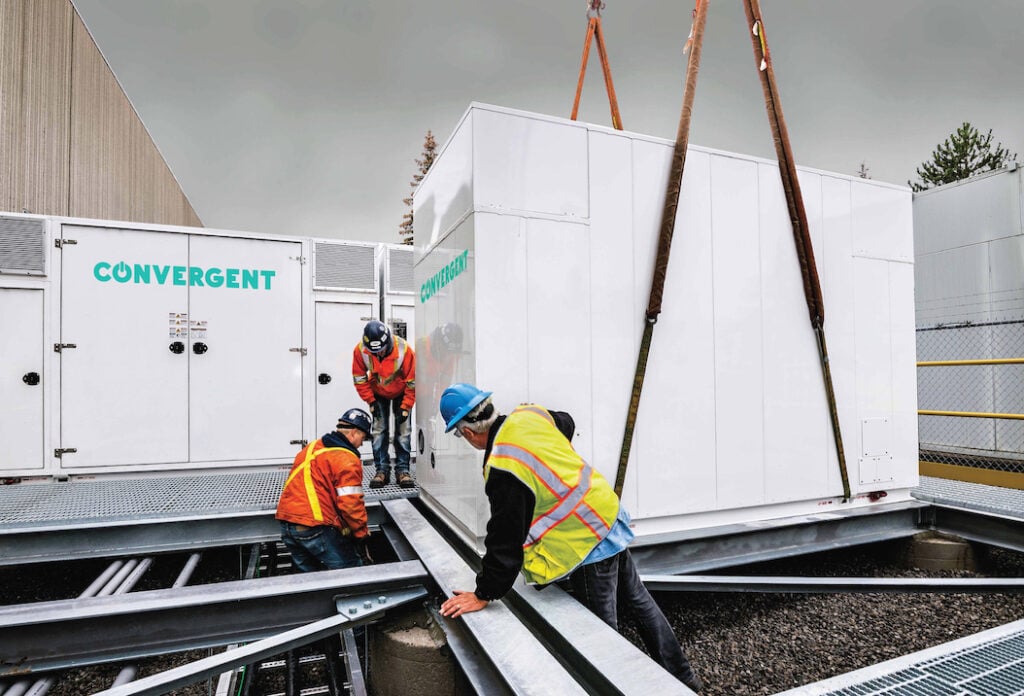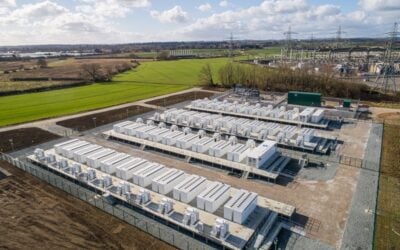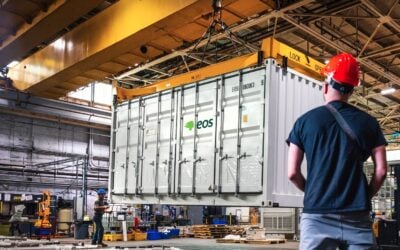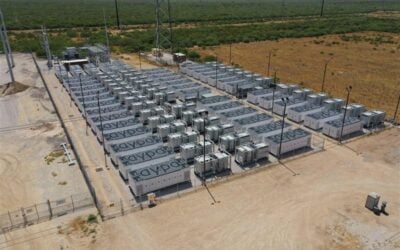
Ontario should put around 6GW of long-duration energy storage (LDES) on its grid by 2032 to cost-effectively meet electricity demand and stay on track to hit net zero targets.
That’s a key takeaway from ‘Long duration energy storage opportunity assessment: a critical component in growing Ontario’s clean energy economy’, a new report authored by energy transition advisory Dunsky Energy + Climate, commissioned by trade group Energy Storage Canada.
Enjoy 12 months of exclusive analysis
- Regular insight and analysis of the industry’s biggest developments
- In-depth interviews with the industry’s leading figures
- Annual digital subscription to the PV Tech Power journal
- Discounts on Solar Media’s portfolio of events, in-person and virtual
Or continue reading this article for free
Ontario leads Canada’s provinces for energy storage adoption, but at this stage has only a couple of hundred megawatts of mostly industrial behind-the-meter (BTM) systems, providing peak shaving applications as well as some pumped hydro energy storage (PHES) facilities.
The province is, however, currently partway through making the country’s biggest-ever energy storage procurement to date, tendering for about 2,500MW of energy storage alongside about 1,500MW of gas in its expedited LT1 tender for long-term capacity.
Electricity demand in Ontario is growing at an unprecedented rate and this growth is expected to continue. The Ontario Independent Electricity System Operator (IESO) has projected a need for generation capacity to grow from about 42GW today to 88GW by 2050, more than doubling. That mid-century point is also Canada’s targeted date by which it will get to net zero emissions.
The provincial government last year released ‘Powering Ontario’s growth’, a plan for providing “reliable, clean and low-cost power”. It said nuclear and hydroelectric power are the lowest-cost generation sources in Ontario today, but that the province would be holding competitive solicitations for resources, including wind, solar PV, hydroelectric, biogas and energy storage.
Upon the release of that plan last year, Energy Storage Canada executive director Justin Rangooni told Energy-Storage.news that the government had recognised “the critical role clean energy storage resources must play in ensuring reliability, resiliency and helping to reduce Greenhouse Gas (GHG) emissions”.
LDES for Ontario modelled as 10-hour duration resources
The new report from Dunsky notes that consensus has been reached over Ontario’s need to rapidly scale up non-emitting generation and aims to show how LDES can help enable its integration on the grid.
While definitions of ‘long-duration’ vary, Dunsky modelled its analysis on an assumption the term represents resources of 10-hour duration, applying it to the different scenarios provided by the IESO in its ‘Pathways to decarbonization’ study.
The report modelled three scenarios for Ontario’s future energy system: the first involves the uncertainty of new nuclear generation and hydrogen-fired turbines coming online; the second includes new nuclear coming online but hydrogen struggling; and the third consists of nuclear resources deployed at scale, but capacity shortfalls becoming pronounced due to higher-than-expected peak demand and other factors like import capacity constraints.
While natural gas is considered the most likely backup generation for managing capacity shortfalls, Dunsky noted that reliance on natural gas has environmental downsides while the need to purchase fuel would also subject Ontario ratepayers to the risk of commodity price volatility.
Ontario needs to deploy up to 6GW of LDES – in other words at least 60GWh – “starting in 2032”, under the first scenario. In the second and third scenarios, that rises to 10GW and 18GW respectively.
For example, energy system planning in IESO’s study largely assumes Ontario’s fleet of peaking power plants will be replaced with hydrogen turbines, but LDES in combination with wind generation is a cost-effective alternative, the Energy Storage Canada-Dunsky report found.
Deploying 6GW of LDES could provide between CA$11 billion (US$8.18 billion) and CA$20 billion in savings to ratepayers over its lifetime relative to IESO’s baseline scenario, according to the authors. It would be an immediate, and “no regrets” move for the system operator to incorporate LDES into its future planning and explore all the available options.
Ontario’s government recently ordered energy company TC Energy to develop a “potential long-term revenue framework” for a proposed LDES asset – a 1GW pumped hydro plant – after energy minister Todd Smith decided the planned project did not represent a viable investment.
Elsewhere in the world, energy markets and grids that are going to higher levels of renewable energy penetration are starting to make their own determinations about long-duration energy storage. It is however still early days for the system.
Solicitations for LDES resources have been held in the US and Australian states of California and New South Wales, while in the UK, the government is currently taking industry consultations on a framework to stimulate investment into the technologies, proposing a cap and floor mechanism and focusing on non-lithium technologies.
You can read Energy Storage Canada’s ‘Long duration energy storage opportunity assessment’ report here.





